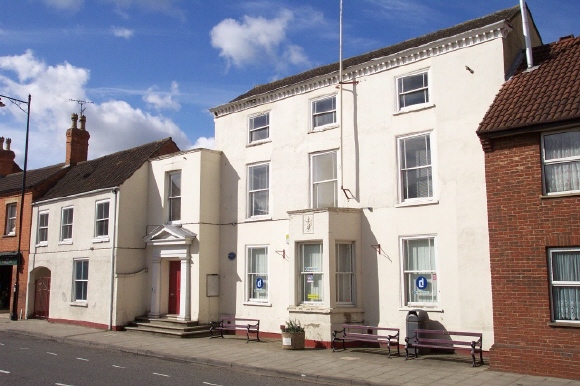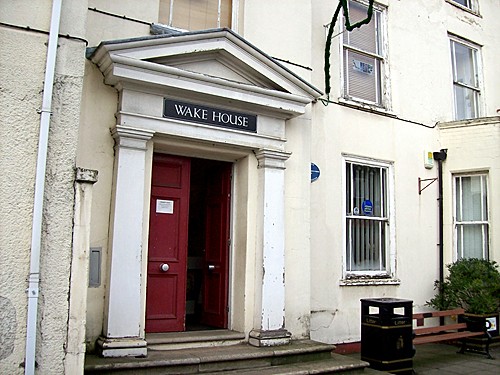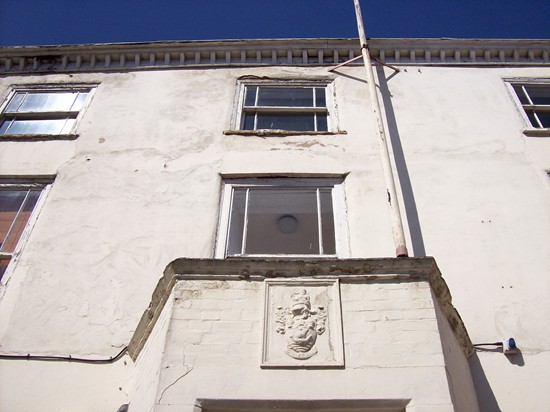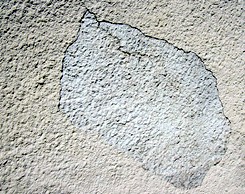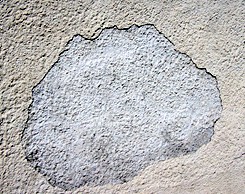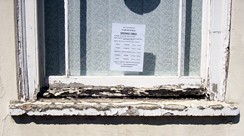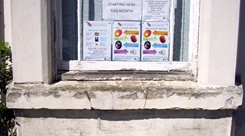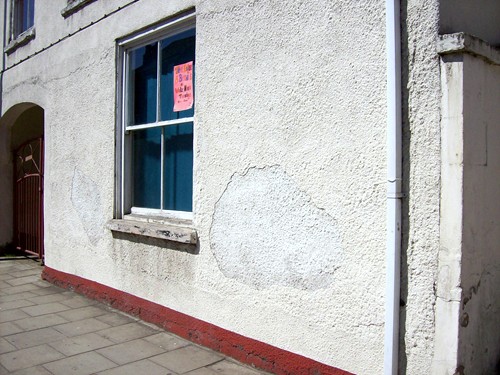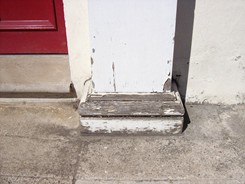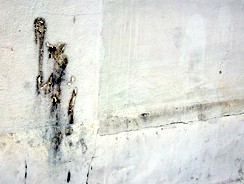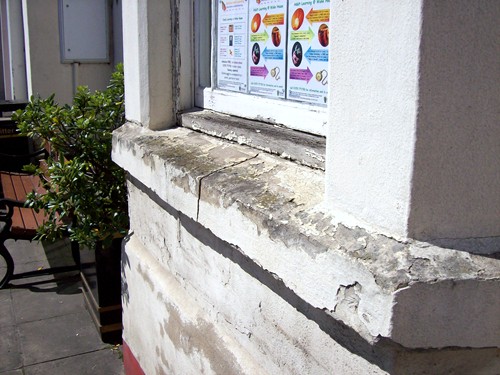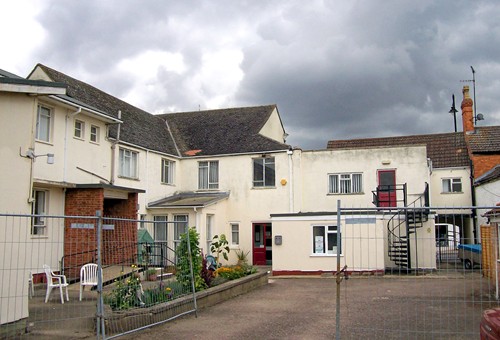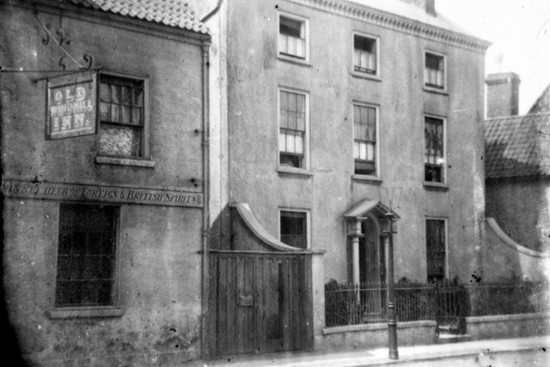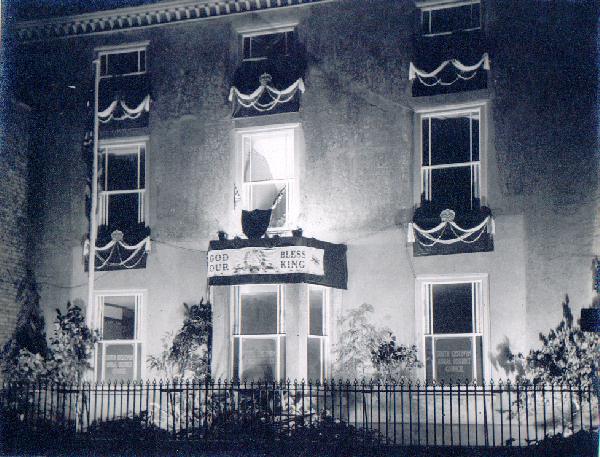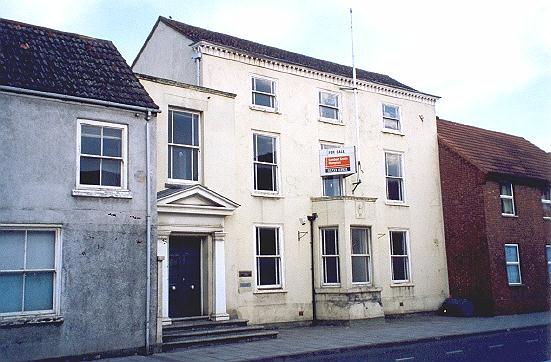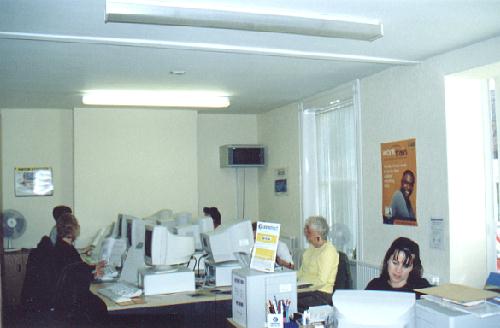|
Wake House
The large house on the west side of North Street was the birthplace of Charles Frederick Worth, son of a local solicitor, who founded the famous Paris fashion house and a blue plaque tells us that he was born here on 13th October 1825. The property dates back to the early 19th century although the exact date of construction is not known but would appear to be 1821-24. William Worth, a solicitor, moved from Horbling to set up in practice as a solicitor in 1820 when the Waggon and Horses was on the market, a public house that was demolished to make way for a grand three-storey town house that later became known as Wake House. The Waggon and Horses had disappeared from the list of taverns in the town published by William White in his directory of 1826, thus confirming that it had disappeared from the street scene. Worth had married in 1816 and already had a son and a daughter but more children were to follow and so a large house would be needed as a family home with room for his law offices. Three more children were subsequently born there but the domestic harmony was not to last. Worth separated from his wife and vacated the premises in 1836 when his affairs collapsed and he became bankrupt. The house was heavily mortgaged and the mortgagee may well have been William Brown Darwin, a wealthy landowner of Elston Hall, Nottinghamshire, a nephew of the celebrated Charles Darwin, because ownership reverted to him and he leased it to a Spalding solicitor, Gervase William Willders, who had taken over Worth's practice four years before but when Darwin died in June 1841 he bought the property. Willders' wife, Ellen, died at Wake House after a short illness on Tuesday 23rd January 1849, aged 29, and he himself died there in September 1851. This gives us a glimpse of the interior of the property as it was then because the entire contents were sold by auction at a two-day sale on the premises the following month consisting of furniture, books, a large quantity of silver cutlery and other items weighing 200 ozs., linen, china, glass and fine wines, revealing a gentleman’s residence of some style with even a piano made by the famous Robert Wornum in the drawing room and a small brewery near the kitchen. Two years later, in 1853, the property was sold to another solicitor, Stephen Andrews, whose legal firm remained in occupation until it was converted for use as offices by various local authorities, including Bourne Urban District Council, formed in 1894, and later South Kesteven Rural District Council, formed in 1931, and it was during their tenancy that extensive alterations were made to the frontage including the removal of the porch which was reinstated on the adjoining extension to the left between the house and the Old Windmill public house and replaced by the bay widow we see today with the authority’s coat of arms embossed above. Wake House is now a Grade II listed building and from 1974 to 1993 was used as the local offices of South Kesteven District Council but after they moved out it stood empty for several years until 1997 when a voluntary organisation, the Bourne Arts and Community Trust, was given a three-year lease of the premises for a peppercorn rent of £5 a year. Fund-raising began to turn it into an arts, crafts and community centre that was officially opened in September 2000 by Baroness Willoughby de Eresby, who lives at nearby Grimsthorpe Castle. Memorabilia associated with the house and with Charles Worth are displayed in the Baxter Room, formerly the council chamber. The centre is now used for a variety of activities and one of the ground floor rooms at the front has become a computer skills centre offering drop-in opportunities for local people of all ages who wish to gain hands on experience in the very latest computing technology, surf the Internet and even gain a qualification. The trust has been negotiating with South Kesteven District Council in recent years to purchase Wake House but without success and now hopes to continue on a leasehold basis although an increased rental is likely. Since taking over the building in 1997, maintenance and repairs costing £100,000 have been carried out and the centre has become home to more than 20 clubs and organisations and used by hundreds of people each week and because of this the trust would like to secure their future use of the building. Trust chairman, Mrs Jean Joyce, said in an interview with the Stamford Mercury published on Friday 20th March 2009, that a long term lease was the best way forward for them. "Buying it would not be viable at the present time", she said, "but we do want to give our tenants security. This is a very expensive building to run and there is much work needed to be done on the front and elsewhere but we do want to secure its use for the future." By 2010, Wake House was in a poor state of repair with the frontage in need of attention and the window sills and doorcase crumbling. But the trust was unable to apply for funding to finance repairs until a new lease was agreed and in May that year, SKDC decided to resume negotiations on that basis. Anthony Jennings, of Dowsby Hall, near Bourne, an experienced and dedicated conservationist, considers that Wake House is one of Bourne's best buildings, a good example of late Georgian classicism with carefully proportioned fenestration. In a letter to The Local newspaper on 3rd September 2010, after the plight of the building had been revealed in an article by Rex Needle, he wrote: "The district council or the trust must ensure that any windows that have to be replaced are identical in all respects to the existing ones with their characteristic early Victorian glazing, and of appropriate materials, in other words good quality wood rather than, for example, the environmentally unfriendly uPVC that continues to disfigure the town. Too much of the conservation area has already been allowed to deteriorate through thoughtless and historical ignorance." In October 2010, South Kesteven District Council put Wake House up for sale as a commercial investment and with a sitting tenant, the Bourne Arts and Community Trust. A full repairing and insuring lease had also been agreed with the trustees for a rental of £6,000 a year with a rent review every five years when the tenant would have the option to terminate subject to six months written notice. The sale was by informal tender with offers to close by November 12th. The arrangement was welcomed by the trust because it would give them security of tenure for the foreseeable future irrespective of the owner of Wake House. “If the council wishes to sell with the stipulation that we remain then that would be acceptable”, said Mrs Joyce. “A long lease is what we have been asking for and our sole objective is to ensure that those organisations who use the building can continue to do so and that we can go on providing the same service as in the past. It will also enable us to carry out repairs to the building and make it more presentable to the public.” WAKE HOUSE SAVED FOR THE COMMUNITY In June 2016, Bourne United Charities bought Wake House from South Kesteven District Council and immediately granted a long lease to Bourne Arts and Community Trust, thus securing the building for community use in the future. The sale price was £130,000, just over half of the £250,000 which the council was asking for when the property was put on the market in October 2010 although there were no takers and it was withdrawn two years later. Negotiations to complete the sale had been going on for two years and will now enable the trust carry out the necessary repair and maintenance work to keep it in good order although the bill for this work is likely to be as high as £200,000. Secretary Greg Cejer said that the trust would now be seeking grants to finance the restoration work, the first priority being to refurbish the exterior, notably the frontage on North Street which has deteriorated badly in recent years. They were also planning to attract more groups and individuals to use the building now that its future role had been secured. The trust had applied to Bourne United Charities two years before with a view to borrowing the money to purchase Wake House but in the event, the trustees decided to buy the building and lease it back which has been a more satisfactory outcome. David Mapp, town and district councillor and a charities trustee who negotiated the purchase, said that the acquisition of the building would make a positive difference to the community and enable Bourne Arts and Community Trust continue with the good work it has been doing for the town for the past 20 years.
REVISED JUNE 2016 See also William Worth Charles Worth
Go to: Main Index Villages Index |
||||||||||||||||||||||||||||
